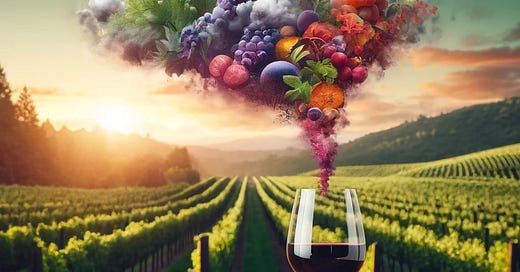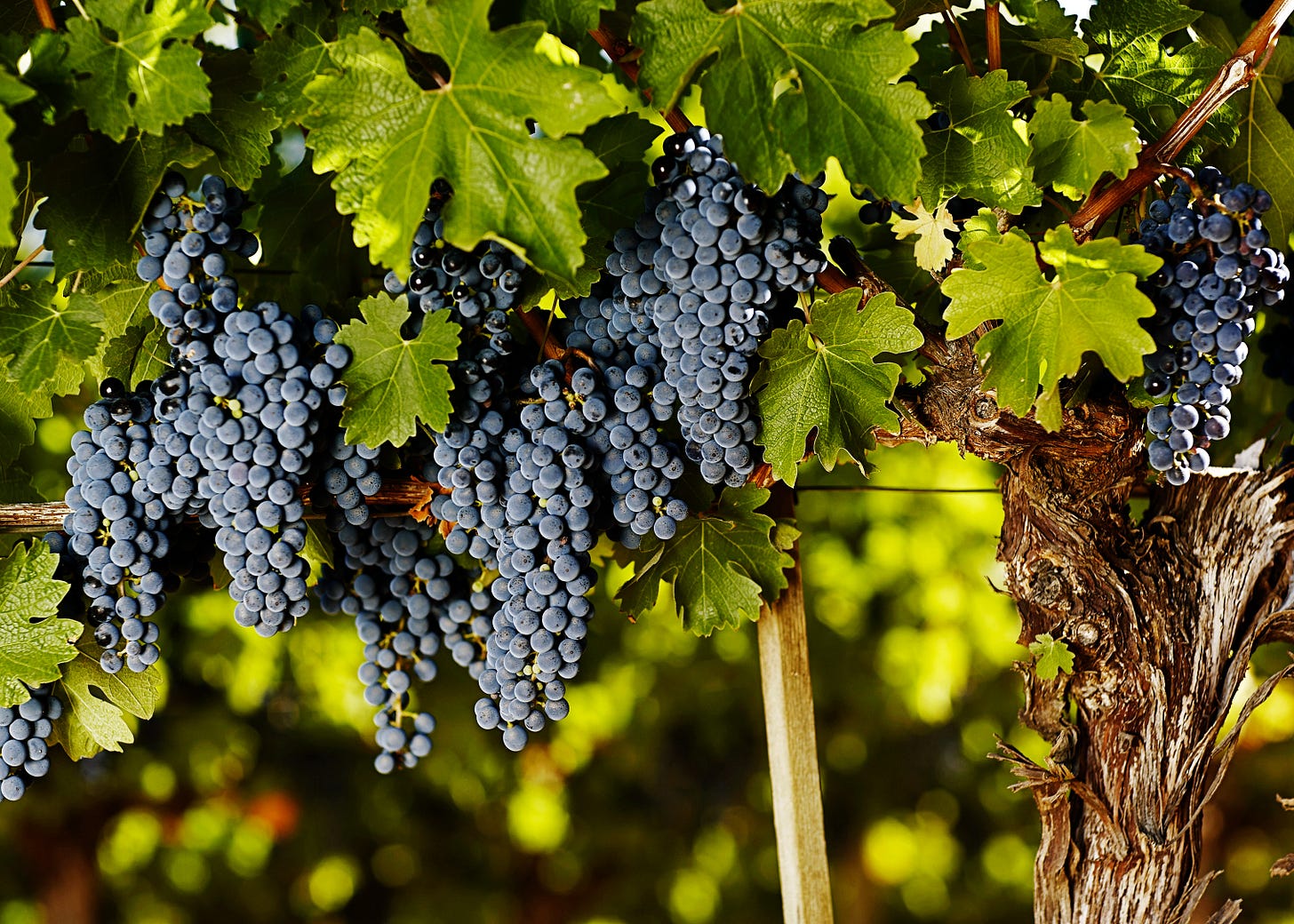We need your help
First, thank you for engaging with Napa Valley Features. As we approach our first anniversary on May 6, we are grateful for the thousands of subscribers who have joined us and the vibrant community that has emerged around our commitment to deliver impactful local journalism. Our content resonates not just in Napa Valley but as a bellwether for similar communities elsewhere.
Here's how you can support our mission as we aim to reach 1,000 paid subscribers, with only 80 more needed:
If you currently enjoy our content as a non-paid subscriber, please consider upgrading to a paid subscription. Your support is crucial in helping us continue our work.
If you're already a paid subscriber, thank you! You can further help by increasing your subscription level or gifting a subscription to someone who values insightful journalism.
Together, we can continue to inform, connect and engage everyone interested in the vibrant life and pivotal issues of the Napa Valley. Join us in making a meaningful impact.
Dan Berger’s Varietal Views: Red blends
NAPA VALLEY, Calif. — I’m not a big fan of most domestic blended red wines. Far too many are simple, higher in alcohol than I prefer, lack the acidity to work properly with food and are made with such softness that most call for an ice cube. That way, at least, I can enjoy some of the flavors that were used in their construction.
I am also not a big devotee of many varietal red wines. Too many do not resemble the variety listed on the front label. Often the grapes are picked too late. In other words, they have nothing to do with the grape listed as being at least 75% of what’s required to be a varietal. In particular, most cabernets smell more like things other than cabernet, and there is a disturbing homogeneity to so many of them that obviates the notion that subregional characteristics still are distinctive. For the most part, that aspect doesn’t exist anymore.
The everyday red wines that appeal to me most are from Europe, Australia, New Zealand or from U.S. regions that are cool enough to make wines with distinctiveness — some of the traits that I believe should be evident in all red wines. In my wine cellar I have lots of older wines that I am happy to share with those who have an interest in such things. But for midweek meals, I buy simple, personality-driven reds.
How did domestic red wine get so simple? We’ll get to that later. First a look at some history.
Varietal wines are a relatively recent phenomenon in this country. It wasn’t until 1945 or so that varietal wines began to be made in this country. It probably didn’t even represent a category until the 1970s. At the beginning varietal wines had to be a mere 51% of the grape identified on the front label. And 51% was appropriate then for several reasons, primarily because consumers had no clue what each of the common varietals should smell and taste like.
At that time white wines were not a big deal with most Americans. U.S. whites were being made oxidatively so many reflected less varietal character and more oxidation. (Stainless steel fermentation tanks, which make fresher, fruitier wines, did not come into wide use until the 1970s.)
And many reds were less varietal in the 1960s because most of the vines planted throughout the state were done so haphazardly, without serious regard for uniform plantings. The famous “field blend” red wines took precedence over varietal correctness. What was zinfandel to one winery could well have been 49% carignane, while to another its zin was 49% petite sirah. Both wines could be legally called zinfandel.
In 1976 the law changed, requiring varietal wines to be 75% of the named variety. So varietal wines took on different personas. But there was still a lot of room (25%) for flavor “enhancement” through blending. Also, winery sanitation was not as major an issue as it later became, and spoilage elements were more commonplace than later.
By the early 1980s another factor entered the fine-wine scene. It was the concept of quality combined with escalating prices. Generic wines never could command higher prices, but varietals could. It soon became clear that generic wines were for everyday drinking and that varietals were more “serious,” appropriate for weekends and special occasions. And the public’s demand for distinctiveness and varietal expression grew.
Still, wineries were free to use their 25% leeway to “improve” a wine, even if the addition robbed the wine of some of its varietal character. Since the varietal justified a higher price, many wines were produced with a lot less than the legal 25% “other” grapes to retain the varietal designation, even if a higher percentage of other grapes made a better wine.
I call this the “varietal trap,” where winemakers found themselves crafting wines, usually reds, that might be better with 30% of something. To keep the varietal designation, though, they had to blend in no more than 25% of other grapes. If a winemaker chose to make a better wine and abandoned the varietal name, it surely sold for less. Generic wines often are seen as cheaper.
(In the 1960s and 1970s, the Louis M. Martini Winery in Napa annually made a superb wine called barbera. It was almost never more than 55% barbera, the rest being grapes appropriate to what barbera smelled and tasted like from vintage to vintage. After the rules changed that required 75% minimum for the variety to appear on the label, Mike Martini told me that the winery had a difficult time making barbera. He said using too much barbera changed the way the wine had always been.)
I have long championed well-made blended red wines when the fruit is from cooler (coastal) regions, when the fruit is handled with care, and when the result is balanced with lower alcohols and has good acidity. Blended reds can be excellent and can offer much to consumers who want flavor, not political (varietal) correctness.
When you’re not looking for the varietal character to play a huge role in a red wine, it’s fun to taste one that has a bit of grenache (yielding a trace of cranberry), a little carignan (for plum-y, earthy, Old World fruit), perhaps a bit of some sangiovese (for acidity) and so forth.
Such wines may be similar to the Rhône blends that we have seen in such wines as French Côtes du Rhônes as well as California wines that emulate them. If such a wine is from cooler climates, the result can often be a charming alternative to some mundane varietal wine.
Of course, California does make many structured and balanced red wines that carry varietal designations, but to find them you often have to follow certain strategies, one of which is to forget trying to find them in a supermarket. Wines being sold in most supermarket beverage sections tend to be commonplace varietal wines. California’s best structured and balanced red wines are typically from grape varieties that are uncommon.
Because of that, some of the wines that are the most interesting are made from grape varieties that are not necessarily widely recognized, such as pinot meunier, melon de Bourgogne, barbera, nebbiolo, gamay noir and blaufrankisch. And many of the best producers of these semi-obscure wines are small, independent producers that have virtually no reputation.
The sad news here is that most of the wine being produced in the United States in the last decade or two reflects the growing interest among many Americans in sweet red wines. One of the most popular wine brands in the United States these days is called Stella Rosa. I have not tasted any of these wines, but those who know of it tell me it is sweet. That’s great for people who like that sort of thing. I do not.
Other wine brands are equally bothersome to me. One in particular is a popular pinot noir that simply has no pinot noir characteristics and is sweet. There is also a well-known brand of chardonnay that’s a bit sweet. The wines are commercial and they sell. That’s all anybody seems to care about.
There is no particular secret to any of this. Winemakers know what I’m talking about. Americans do not have a particularly strong affinity for completely dry wine. This has never been a country with a wine-consuming culture, especially in certain areas of the country. There, completely dry wines are considered sour and sell poorly. Some wine companies have known this since the end of Prohibition. Some cities in the United States are considered by beverage wholesalers to be wine-free zones.
My wine-buying patterns illustrate what I prefer. In the last six weeks I bought two pinot blancs from a California winery, six bottles of a cru Beaujolais, two bottles of Muscadet, two bottles of a dry German riesling, three bottles of a dry Australian riesling, two Chinons from France’s Loire Valley (cabernet franc), a California gamay noir (see Wine Discovery below) and a case of a dry German pinot blanc.
California makes lots of fascinating wines, most infinitely better than they have ever been. But the style in which most wines are being produced today appears to me to be adhering to a formula that I find oriented toward people who don’t know very much about wine. Or people who consume it as an aperitif, without food. There is another side to all of this, of course, but it is probably best for me to hold onto that thought until I can devote an entire column to the subject.
Wine Discovery: 2022 Lucy Gamay Noir, Santa Lucia Highlands, Monterey County ($30) – Proof that California can make structured, balanced red wines of superb quality are everywhere, although you have to look to find them. I discovered this wine a week ago and was absolutely awed by its bright and cheery personality. Gamay is the wonderful grape at the heart of French Beaujolais. In California it can produce remarkable and varied elements starting with pomegranate, cherry and cranberry, so it is slightly like grenache. But it has more boysenberry and pepper notes. The taste is luxurious because the tannins are moderate. Because the aftertaste is relatively crisp, it is a perfect food companion. The 2023 version of this wine has been released at the winery, but I suggest trying to find the 2022 because it is still somewhat backward and needs an extra year or two in the bottle. That can be shortened to just a few hours if you decant it. The Lucy project, dedicated to cool Monterey County fruit, is a joint venture between the team of winemaker Bibiana Ravé and her grape-expert husband, Jeff Pisoni, whose family farms some of the best vineyards in Santa Lucia Highlands of Monterey County. Bottle Barn in Santa Rosa has the 2022 vintage of this wine for $25.
If today's story captured your interest, explore these related articles:
Dan Berger has been writing about wine since 1975.







